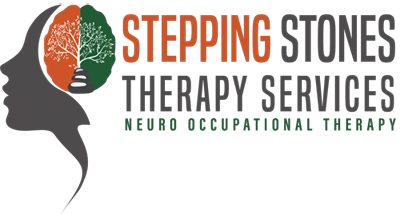Fatigue after a brain injury can be one of the most overwhelming symptoms to live with. It often lasts long after physical healing, showing up as mental exhaustion, reduced motivation and a feeling of hitting a wall—sometimes suddenly, sometimes daily.
As an occupational therapist, I understand how hard this can be. Fatigue can affect your work, relationships and confidence. But with the right support and strategies, it can be managed. Below, I share practical techniques to help you understand your energy levels and feel more in control again.
What Is Fatigue Management?
Fatigue management means learning to notice, plan for and reduce tiredness before it becomes overwhelming. It’s a core part of occupational therapy after brain injury and can also support people living with chronic fatigue syndrome, sleep disorders or long-term stress.
It’s not about pushing through exhaustion. It’s about pacing your activities, listening to your body and finding new ways to manage your day.
Recognising the Signs of Fatigue
Fatigue after brain injury can affect your body, mind and mood. Common symptoms include:
- Trouble focusing or remembering
- Feeling irritable or low in mood
- Slurred speech or clumsiness
- Needing long rests after short tasks
- A sense of mental fog or heaviness
These signs of fatigue aren’t always obvious to others—but they are real. Understanding them is the first step to managing your energy well.
Why Is Sleep So Important?
Sleep and Fatigue Management
Sleep is closely linked to fatigue. After a brain injury, your need for rest may increase. You may also experience disrupted circadian rhythms, making it harder to get enough quality sleep.
Good fatigue management often starts with sleep:
- Aim for a calm, regular sleep routine
- Reduce screen time before bed
- Try not to oversleep during the day
- Keep your sleep environment quiet and dark
Even small improvements in sleep can help stabilise fatigue levels and improve motivation.
Pacing and Planning Activities
How to Balance Energy and Activity
One of the most effective techniques is pacing—breaking up your activities with rest and making space for recovery. This avoids boom-and-bust cycles of doing too much and crashing.
Try:
- Planning your day around energy levels (not the clock)
- Alternating between physical and mental tasks
- Using timers or checklists to stop before exhaustion sets in
- Allowing recovery time after challenging tasks
I often help clients create simple weekly plans to reduce pressure and make the day feel more manageable.
Physical Activity and Stress Management
Finding the Right Level of Exercise
Light exercise can help with mood and sleep, but overdoing it may increase tiredness. Fatigue management is about finding the right balance. Walking, gentle stretching or short sessions of movement can be a good start.
Managing stress is also essential. Fatigue and stress often feed into each other, creating a cycle that’s hard to break. Occupational therapy helps you spot patterns, reduce triggers and build in recovery time.
Fatigue Management at Work
Health and Safety, Communication and Support
Returning to work with ongoing fatigue requires a careful plan. It’s important to think about health and safety, realistic hours and the type of work you’re doing.
Reasonable adjustments might include:
- Shorter hours or phased returns
- Breaks between tasks
- Changes to the work environment
Open communication with your employer can help you feel supported. I can offer advice and guidance on how to approach these conversations and create a plan that protects your health and confidence.
Financial Support and Services That Can Help
What to Do If Fatigue Is Affecting Your Income
If fatigue is affecting your ability to work, it may be worth exploring financial support or services available through your local Jobcentre or the government’s Access to Work scheme.
These services can help with:
- Equipment or transport
- Support workers
- Advice on flexible working
- Workplace assessments
Knowing what’s available can ease some of the stress that fatigue brings.
Building Your Personal Fatigue Management Plan
Everyone’s fatigue is different. Your plan should be too.
As an occupational therapist, I work closely with you to create a personalised fatigue management plan. Together, we look at your daily life, symptoms, goals and energy levels to find what works for you.
We might include:
- Activity diaries to track patterns
- Tools to support sleep and reduce stress
- Guidance on workplace adjustments
- Support with self-care and mental health
When to Seek Help
If tiredness is starting to affect your day-to-day life, relationships or work, it may be time to get support. You don’t need to manage this alone.
At Stepping Stones, I offer gentle, step-by-step help to understand what’s going on and make positive changes at your pace. Support is available both remotely and in person, depending on your needs.
Let’s Talk
If you’re living with fatigue after a brain injury, it’s okay to ask for help. I offer a free 15-minute phone consultation to talk through your situation and explore what might help.

